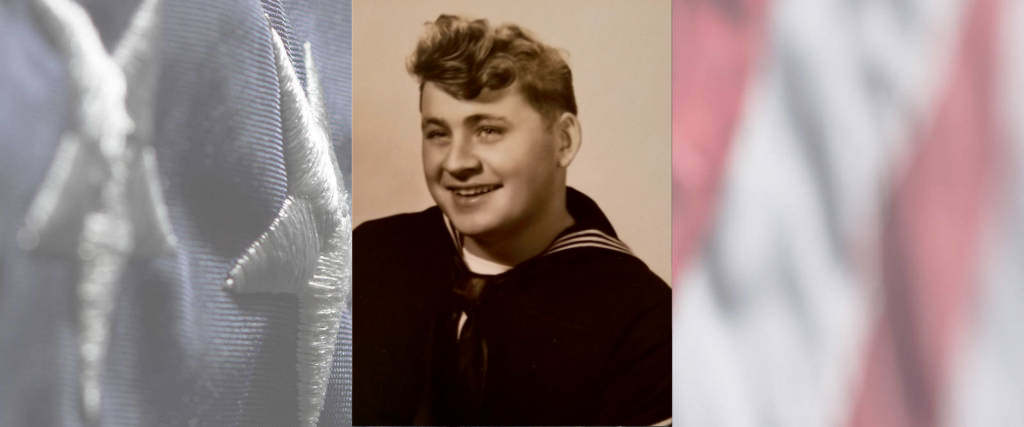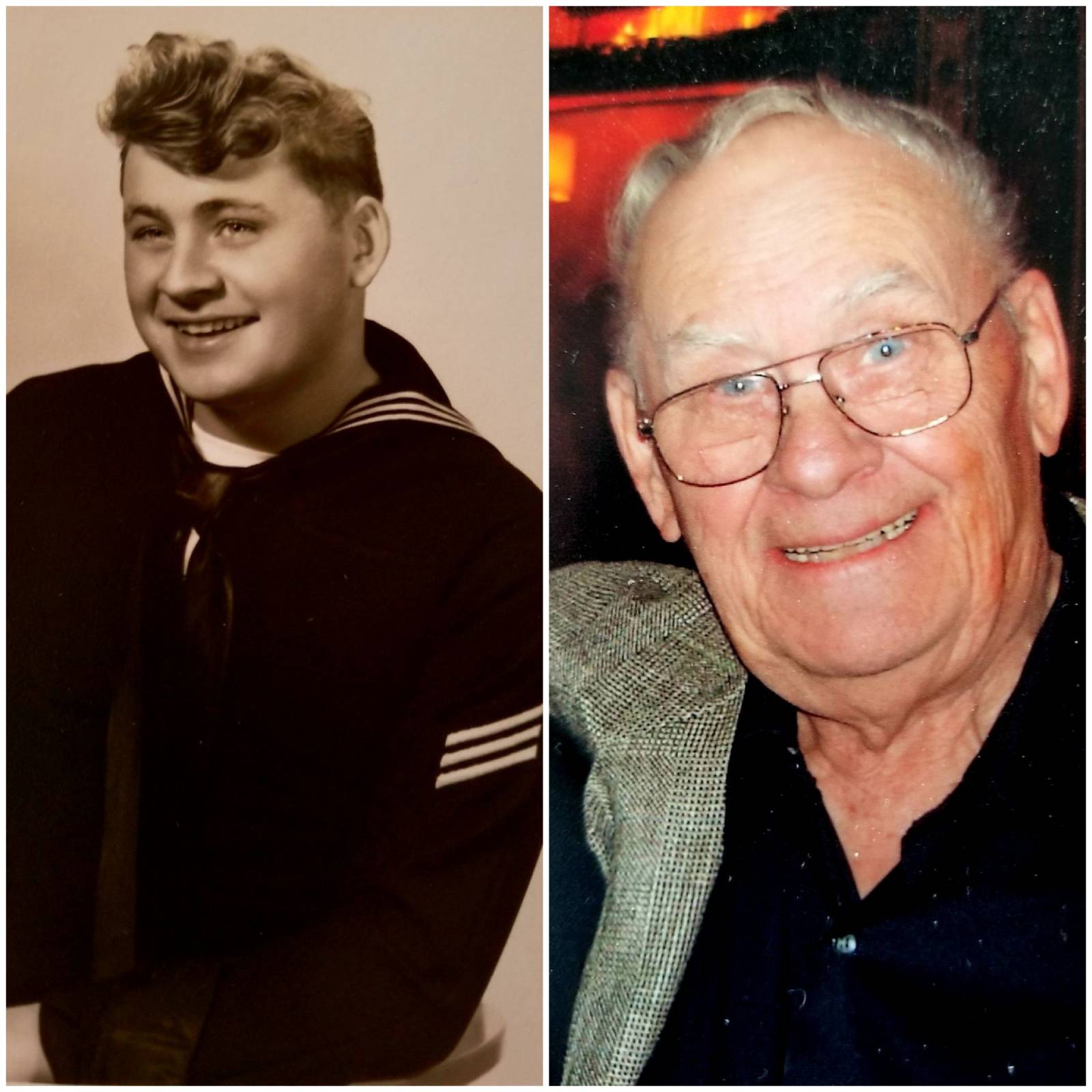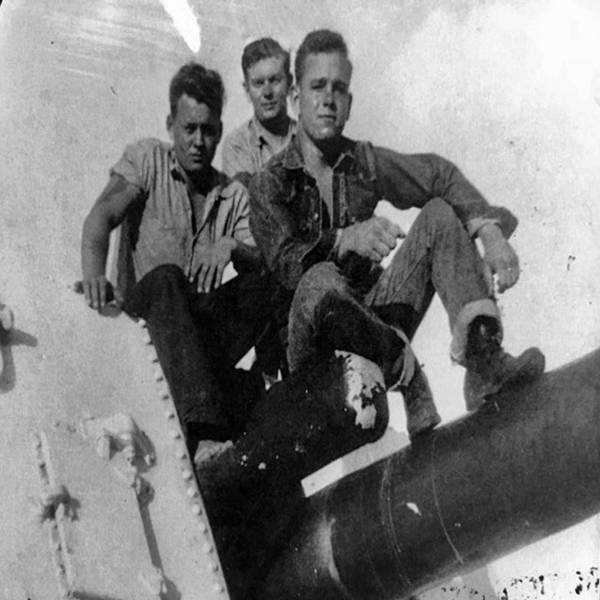U.S. Coast Guard Korean War Hampshire, IL Flight date: 07/11/18
By Jim Parker, Honor Flight Chicago Veteran Interviews Volunteer
At first blush, Arne Nilsen is a rather typical Chicago veteran, born and raised in the Grand/Austin area. Arne loved to play baseball. He attended Burbank Elementary and Steinmetz High School. With the advent of the Korean War, he joined the Coast Guard. When his enlistment was over, he returned to Chicago, took a job with Motorola and married a local Polish girl. They moved to the suburbs and raised their kids. Typical, right? As Paul Harvey used to say- here’s the rest of the story.
Arne’s Dad, Jacob, came from the seaport town of Brevik, Norway where he was trained as a machinist. He immigrated to Chicago in the late 1920’s and worked at his trade for Revere Copper and Brass. His wife, Svanhild, joined him in Chicago a couple of years later. As was typical of the times, she stayed home and raised Arne. These were the depression years so Jacob took on many other jobs, including working at the Chicago World’s Fair. As the only child of immigrant parents, Arne’s first language was Norwegian; it was only spoken in the home, never outside of the home. Arne became bilingual very early, learning English at school and Italian and Polish from the kids on the block.
He was a good student who had a keen interest in building and fixing things. At Steinmetz, he took mechanical drawing and shop classes and learned several trades. Arne was also industrious and worked at many jobs growing up, from cutting grass to selling magazines. His first real job was working a kick press at age 14. Wanderlust also entered Arne’s life early. At 16, he dropped out of school and took jobs in Wisconsin and Wyoming for a while. Arne returned home to take a job with Pepsi-Cola. Still only 16, he thought about the military. Arne did not want to be a “ground pounder,” and had always been interested in ships and the sea, so he chose the Coast Guard. Arne’s parents were required to consent to his enlistment. Arne’s Dad did not really understand his son’s restlessness but hoping it was something that might “wear off,” he and Svanhild consented. Arne enlisted in May, 1949 a few days before his 17th birthday. Arne’s Dad left him with some advice that still remains with him: “observe, listen, learn from others and always be honest with yourself.”
Arne had Coast Guard Basic Training in Cape May, NJ. He was anxious to get his first assignment, so after graduating he passed up technical training and went directly to the 9th CG District (Great Lakes) in Cleveland. From there, he was assigned to the USCGC Sundew (WLB-404) berthed in Milwaukee. The Sundew was an Iris Class (180-feet) seagoing buoy tender. Lake Michigan is a large shipping lake that accommodates some very large cargo ships. Marker buoys and directional signage referred to generally as “aids to navigation” or “ATON” are very important to safe shipping, and require constant inspection and maintenance. Like all CG cutters, the Sundew also was always on call for ice breaking in shipping lanes and for air-sea rescue operations as needed.
Arne’s rating was “Seaman” and he was responsible to rig, repair and clean all of the ship’s equipment and components located on the deck. This was a big responsibility and, mindful of his father’s admonition, Arne learned his job quickly and well. After several patrols, Arne was transferred to the Milwaukee Life-Saving Station. Arne’s newest ship was the USCGC Basswood (WLB-388) which was in the same class as the Sundew but with a different operating mission. For Arne this was not a pleasant assignment. A series of disagreements with one of the senior officers led to Arne being transferred to the 14th CG District in Honolulu. In most circles, then as today, Hawaii is thought of as a tropical paradise. In the CG, however, it was considered Devil’s Island where only the worst sailors are assigned. He was assigned to the USCGC Iroquois, an Owasco-class high endurance cutter. This ship was larger and faster than the Iris-class cutters with which Arne was familiar. Rather than ATON, it was equipped with a radio-based system for long-range aids to navigation (LORAN) and weather balloon equipment.
Arne was a Seaman whose deck and responsibilities were now larger and more complex. Again, Arne learned his new job well and he was promoted to Seaman 1st Class. The ship’s patrol area was large, requiring longer deployments to locations in the Pacific, far away from its homeport. At the end of each deployment Arne was given shore leave in Honolulu. He was a single guy based in a city that catered to young soldiers. Trouble ahead? OK, a little, but nothing that generated serious charges.
Toward the end of Arne’s tour, his ship’s mission changed. The Iroquois was equipped with four 20mm guns, four 40mm guns and a turret mounted 5” deck gun. It was considered well suited for anti-submarine warfare and was refitted with a Hedgehog mortar launcher and depth charges for that task. Patrol missions changed to anti-sub training with the new equipment. When Arne’s tour ended, he was transferred back to the Great Lakes District. Given his choice of assignments, Arne elected to serve out his enlistment at the USCG Life-Saving Station located on Plum Island near the northern tip of Wisconsin’s Door County. His duties included watching commercial and private boating traffic as they navigated through the dangerous strait called Portes des Morts, also known as “Death’s Door.”
Arne left the Coast Guard in September, 1952 and returned home to Chicago. At age 20, with an honorable discharge, he had a desire to put the skills he learned in the Coast Guard to work. His first job was at Motorola where he assembled and inspected TV cabinets. After that he worked a plastic extrusion press for Campco Plastics. Arne was asked to evaluate the quality and design of extruded plastic parts and their dies. He made notes of his findings to submit to his boss. His boss had his secretary transcribe the notes, however because of Arnie’s imperfect penmanship, Arne had to spend a lot of time with her reviewing them. Arne did not mind this; he was smitten with Marcia Majewski, a beautiful young woman from the Belmont/Central area. They were married in November, 1957.
Arne spent several years at Monsanto Chemical as a machinist, followed by a 19-year career with J.C. Penney as the Building Engineer at the Spring Hill Mall in West Dundee until 1999. Arne then became a general contractor and a licensed real estate broker who built the family home in Hampshire and an entire subdivision. Always interested in flying, he made his first solo flight near Joliet. His hobbies include collecting, hunting and fishing. His favorite story is about Marcia. She did not like fishing and she did not like dogs until Arne arranged a fishing trip with her and one of his friends. At the end of the trip Marcia loved fishing and wanted her own dog. Although Marcia has passed, Arne at 86, still lives in the home he built with her. Arne’s four children (Martin, Curt, Suzanne and Karen) and four grandchildren (Allison, McKenzie, Vincent and Kelley) all live not too far from home and he sees them often….. And now you know the rest of the story!
Honor Flight Chicago is honored and proud to welcome Arne Nilsen aboard our July 11, 2018 flight. Thank you for your service, Arnie!





